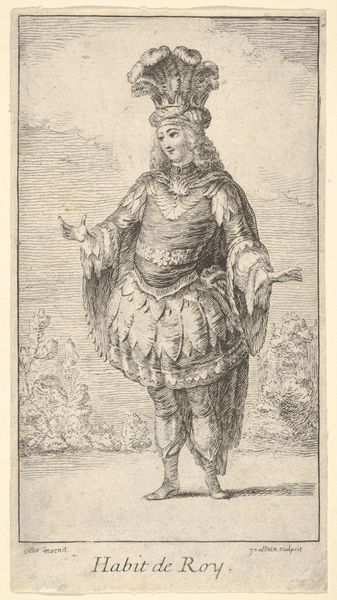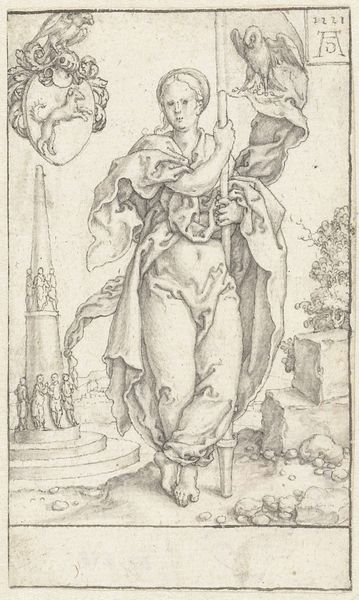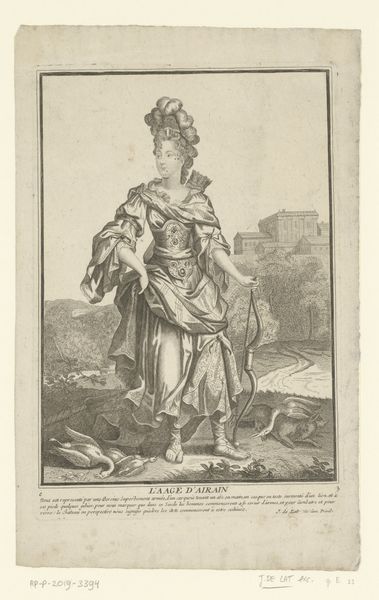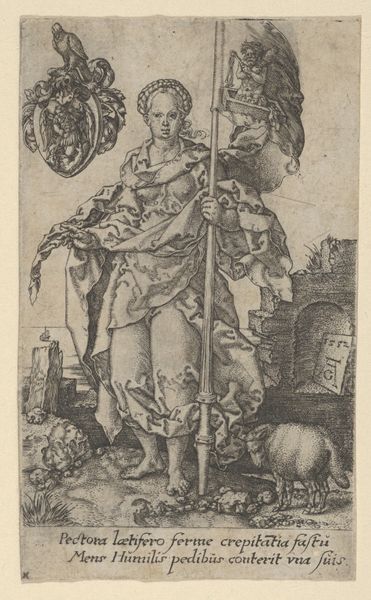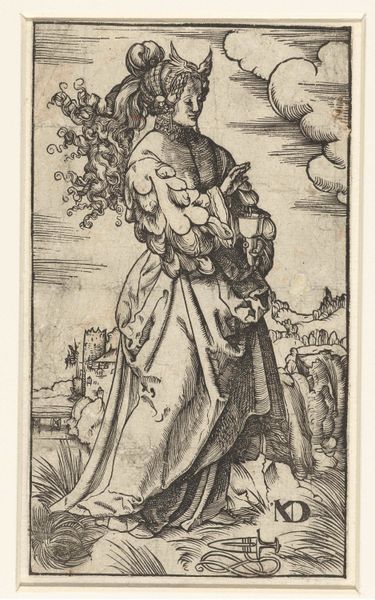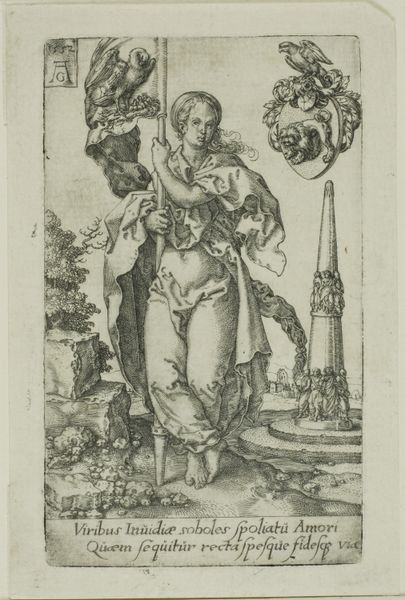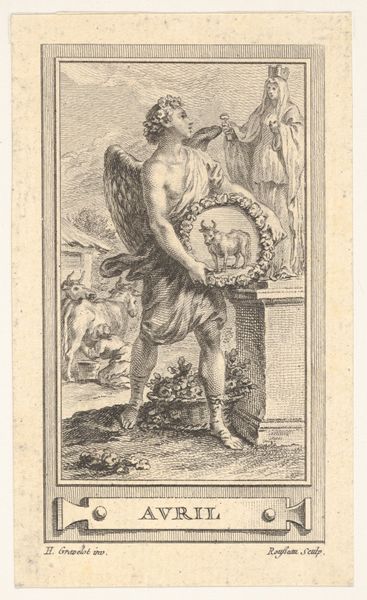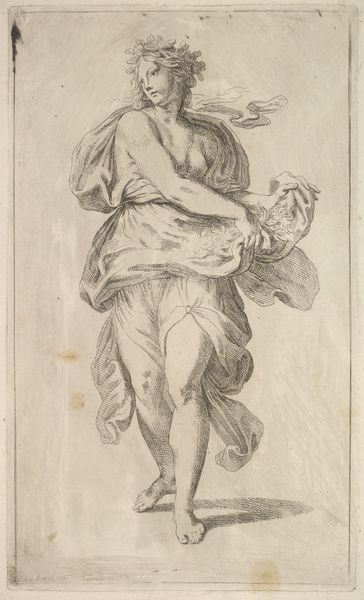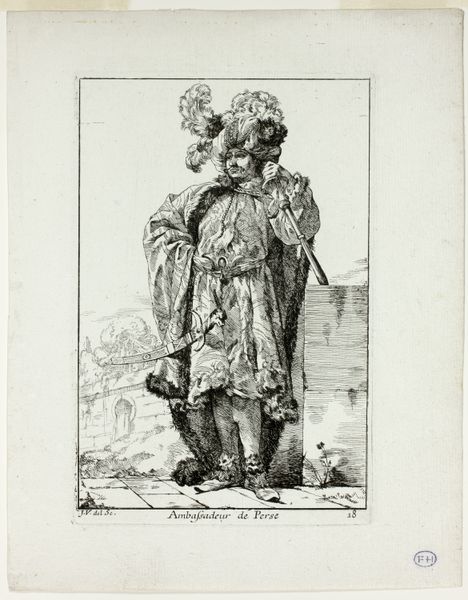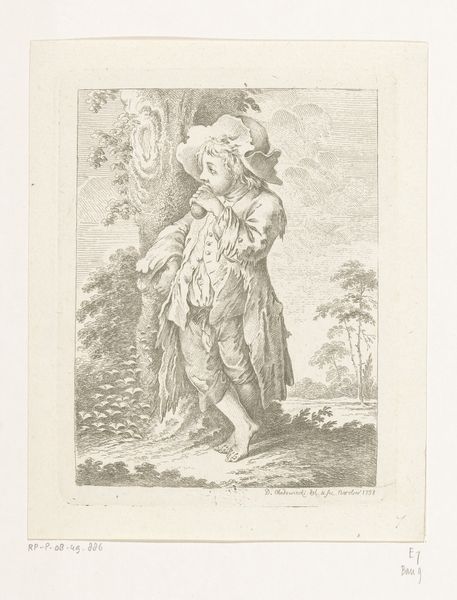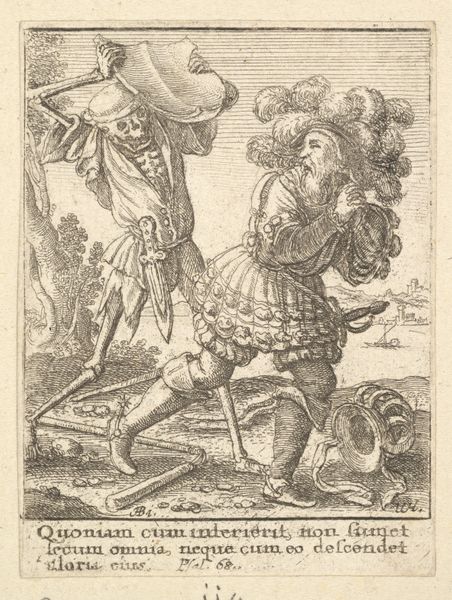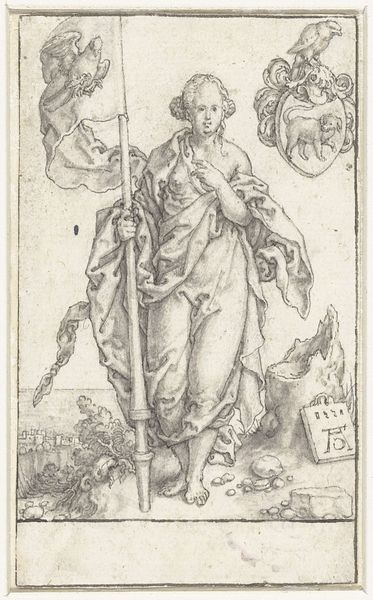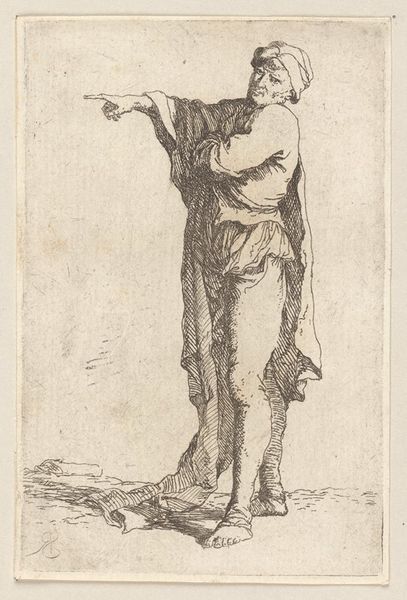
Habit d'Ixion: a man wearing a tonnelet with a sword in the belt, a turban with one large feather on his head, from 'New designs for costumes' (Nouveaux desseins d'habillements à l'usage des balets operas et comedies) 1716 - 1726
0:00
0:00
drawing, print, engraving
#
portrait
#
drawing
#
baroque
# print
#
pencil sketch
#
figuration
#
history-painting
#
engraving
#
sword
Dimensions: image: 6 x 3 3/8 in. (15.3 x 8.5 cm)
Copyright: Public Domain
Curator: Standing before us is "Habit d'Ixion," an engraving created between 1716 and 1726 by François Joullain. Part of a series titled 'New designs for costumes,' it currently resides here at the Metropolitan Museum of Art. My immediate impression is a mix of amusement and slight bewilderment at the attire. What's your take? Editor: Well, I'm immediately struck by the inherent theatricality, even campiness of it. The ridiculously oversized feather in the turban, the short, bulbous skirt—it reads as a blatant display of performative masculinity, yet undermined by the sheer absurdity of the fashion. Curator: Indeed. The subject, dressed as Ixion from Greek mythology, offers insight into the role of costume in stage productions of the Baroque era. This wasn't just clothing; it was a powerful symbol of status, spectacle, and storytelling meant to impress audiences. Ixion, bound to a flaming wheel for his transgressions against Zeus, is here strangely… defanged. Editor: Exactly! Here’s where things get interesting. Joullain, by designing this flamboyant "Habit," isn't merely showcasing a costume; he's participating in the cultural construction of power and gender. Notice how the sword is almost comically small in proportion to the rest of the getup, it undercuts the impression of military authority or dominance we might associate with the symbol. Curator: The engraving technique itself adds another layer. The fine lines and meticulous detail almost create a sense of hyperreality. Each pleat, feather, and buckle is rendered with precision, drawing attention to the artifice. It is almost a flat plane of tonality in its stark presentation and the lack of dynamism adds to the reading as 'removed'. Editor: Precisely. By showcasing this opulent yet slightly ridiculous representation of a mythological figure, Joullain’s print unintentionally pokes at the very foundations of authority. And perhaps it hints at the precarity and performance that is any symbol of cultural domination, whether played out in myth or monarchy. Curator: An interesting point to consider the political climate in that epoch. Joullain presents this figure removed from the context. With Ixion unbound he represents a more free and available reading for this work. This really gives a new perspective into its place within that visual and performance paradigm of the era. Thank you for your insight. Editor: My pleasure, thinking about those subtleties and recontextualization truly enhance how we perceive visual objects and symbols.
Comments
No comments
Be the first to comment and join the conversation on the ultimate creative platform.
